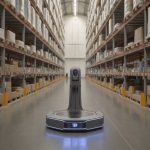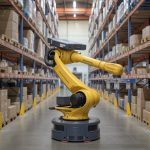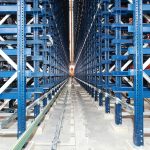« `html
The Role of AI-Powered Vision Systems in Next-Generation Warehouse Robots
Warehouse automation is undergoing a rapid transformation, driven by advancements in artificial intelligence (AI). Among these, AI-powered vision systems are emerging as a pivotal technology, enabling robots to navigate, identify, and manipulate items with unprecedented efficiency. These vision systems leverage deep learning algorithms, computer vision, and sensor fusion to revolutionize logistics and supply chain operations.
How AI-Powered Vision Systems Work in Warehouse Robotics
AI-powered vision systems integrate multiple technologies to enable robots to perceive and interact with their environment. These systems rely on various components to process visual data and make real-time decisions:
- Computer Vision Algorithms: Machine learning algorithms process images captured by cameras to detect, classify, and track objects.
- Depth-Sensing Cameras: 3D cameras allow robots to understand spatial relationships and accurately determine object dimensions.
- LiDAR and Sensor Fusion: Combining LiDAR with camera vision improves obstacle detection and enhances navigation in complex warehouse environments.
- Edge Computing: On-device processing ensures that robots can make split-second decisions without dependency on external servers.
By using a combination of these technologies, AI-enhanced robots can automate package sorting, inventory tracking, and even autonomous order fulfillment.
Enhancing Warehouse Efficiency with AI Vision
The adoption of AI-powered vision systems directly contributes to increased efficiency in warehouse operations. Robots equipped with advanced vision capabilities can:
- Improve Picking and Sorting: Vision-guided robotic arms can identify, grasp, and place items with greater accuracy, reducing human errors.
- Optimize Storage Management: Robots can scan barcodes and recognize product shapes, allowing for precise inventory tracking in real time.
- Navigate Warehouses Seamlessly: AI-driven navigation enables autonomous robots to detect and avoid obstacles, ensuring smooth movements even in dynamic environments.
- Reduce Labor Costs: By automating repetitive tasks, companies can allocate human labor to higher-value activities.
These improvements drive higher productivity and lower operational costs, making AI-powered warehouses more competitive in an increasingly digital economy.
AI Vision Systems and Autonomous Mobile Robots (AMRs)
Autonomous Mobile Robots (AMRs) are a key application of AI-powered vision systems in warehouses. Unlike traditional Automated Guided Vehicles (AGVs), AMRs do not rely on fixed infrastructures such as tracks or magnets. Instead, they use AI-driven vision and sensor data to dynamically adjust their routes based on real-time warehouse conditions.
Benefits of integrating AI vision in AMRs include:
- Real-Time Obstacle Avoidance: Robots can detect and reroute around unexpected obstacles, reducing downtime.
- Adaptive Learning: Machine learning algorithms allow robots to improve navigation efficiency over time based on previous experiences.
- Multi-Robot Coordination: AI vision enables communication between multiple AMRs, ensuring efficient collaboration in busy warehouses.
AI-powered AMRs are particularly valuable in e-commerce fulfillment centers, where fast, flexible, and cost-effective order processing is critical.
Challenges in AI Vision Implementation
Despite its transformative potential, incorporating AI-powered vision systems in warehouse robots is not without challenges:
- High Initial Investment: Implementing AI-driven automation requires substantial upfront costs in hardware, software, and integration.
- Data Processing Limitations: Managing vast amounts of visual data in real time requires advanced computing resources.
- Environmental Variability: Lighting conditions, reflective surfaces, and warehouse clutter can impact the accuracy of vision systems.
- Workforce Adaptation: Employees need training to operate and maintain AI-powered robotic systems effectively.
Overcoming these challenges requires ongoing technological advancements, strategic investments, and collaboration between robotics manufacturers and warehouse operators.
The Future of AI-Powered Warehouse Robotics
As AI technology continues to evolve, the capabilities of vision-powered warehouse robots will only expand. Future developments may include:
- AI-Driven Predictive Maintenance: Vision systems will monitor robot components for wear and tear, enabling proactive maintenance.
- Improved Human-Robot Collaboration: Enhanced AI vision will allow robots to work seamlessly alongside human employees, improving productivity.
- Smarter Decision-Making: Advanced machine learning models will help robots optimize supply chain workflows autonomously.
With continuous innovation, AI-powered vision systems are set to redefine warehouse automation, enabling greater efficiency, adaptability, and intelligence in supply chain operations.
« `



